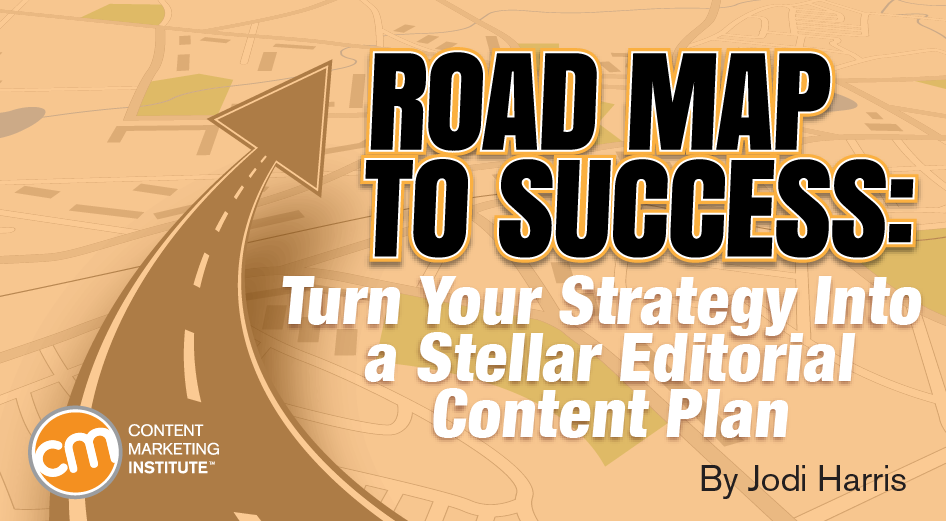Author: Jodi Harris / Source: Content Marketing Institute

Unless today is your first day as a content marketer, you’re aware of how essential a documented strategy is to achieving content marketing success. It’s one of those mantras you’ve heard being chanted again and again throughout every corner of the industry until you simply can’t help but accept it as truth. It really is that important.
But let’s face it: Not all of us have a direct part to play in crafting or controlling our company’s strategic, high-level view of content. There are just as many of us whose job it is to fulfill the promise of those strategic ideals by implementing and executing on an editorial plan – i.e., the policy, process, team resource, and task-related decisions that will best position your content marketing program for long-term success.
Looking to build this essential tactical plan for your organization or refine the one you have? Read on for a handy tutorial and some of our best resources to guide your way.
By the way, if it is your first day on the job, you’ll want to catch up quickly. I recommend starting with our Content Marketing Strategy Essentials guide and branching off from there.
What’s in an editorial plan?
Similar to building your content marketing strategy, planning your editorial can seem intimidating at the outset. You’ll need to consider a lot of moving parts, and design each aspect to function on its own while aligning with your strategic goals. Your plans also need to allow for flexibility since your content will likely need to be adapted to shifting business priorities, emerging tech trends, audience preferences, and other changes over time.
Fortunately, if you break down your plan into three key focal areas the tasks should come into clearer focus, making the process much more manageable. The three areas include:
- Guidelines and governance – editorial quality standards, preferred practices, and guiding principles that define and distinguish the value of your brand’s content
- Processes and tools – tasks, workflow, and routing practices, and the productivity techniques and technologies to keep your content engines running smoothly
- Team resources – roles that handle each task, skills those tasks require, and details on how to keep your team focused and productive
Take a shortcut: If you’re strapped for time but still want to do planning right, why not grab some tricks, tips, and helpful templates from our 2018 Content Marketing Toolkit?
Guidelines and governance
Governance lies at the heart of every editorial program. The decisions made – and the guidelines established for activating them – will ultimately define and distinguish your brand’s content experience by unifying your efforts under a single set of communication standards. Determining these protocols at the start makes it easier to make tactical, go/no-go decisions and maintain strategic alignment throughout the life span of your content program.
Content tone, voice, and style: Outline the qualities and characteristics that will make your content recognizable as an extension of your brand and noticeably distinct from everyone else’s content. Clearly define your preferred tone, voice, and stylistic standards that all of your content should stick to.
Editorial quality and value: No matter what tone, voice, and style you use, editorial teams must maintain standards of content quality – i.e., the characteristics that make your content worthy of your audience. Not only will poor content quality hinder the results you want, it can reflect poorly on your brand’s value and reputation as well.
Every content effort should be judged against its ability to provide the value your audience expects. If you are unable to check all the boxes on Ahava Liebtag’s Creating Valuable Content, a Step-By-Step Checklist (below), your content might need to be sent back to the drawing board.

Take a…
Audience Team
The digital audience insights you need to build, manage and market to your digital audiences.

